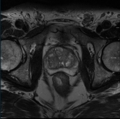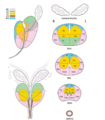Difference between revisions of "2017 Winter Project Week/ProstateSectorSegmentation"
From NAMIC Wiki
| Line 39: | Line 39: | ||
<!-- Progress and Next steps bullet points (fill out at the end of project week) --> | <!-- Progress and Next steps bullet points (fill out at the end of project week) --> | ||
* Creation of 3 zone segmentations of the prostate (different volumes) | * Creation of 3 zone segmentations of the prostate (different volumes) | ||
| − | * Prediction of zones in ProstateX challenge with Deep Learning is in progress | + | * Prediction of zones for specific locations in ProstateX challenge with Deep Learning is in progress |
* Next Steps: Create 3D model with higher resolution. Atlas based segmentation on more publicly available data. | * Next Steps: Create 3D model with higher resolution. Atlas based segmentation on more publicly available data. | ||
|} | |} | ||
Revision as of 15:51, 13 January 2017
Home < 2017 Winter Project Week < ProstateSectorSegmentationKey Investigators
- Anneke Meyer, University of Magdeburg (Germany)
- Andrey Fedorov, BWH
- Alireza Mehrtash, BWH
- Christian Hansen, University of Magdeburg (Germany)
- Teodora Szasz, University of Chicago
Project Description
| Objective | Approach and Plan | Progress and Next Steps |
|---|---|---|
|
|
|



